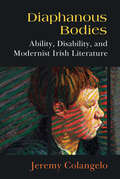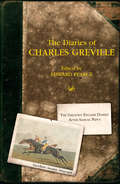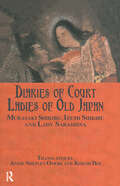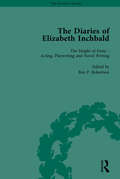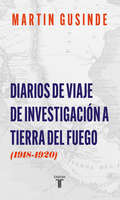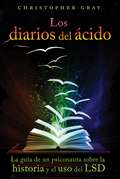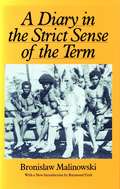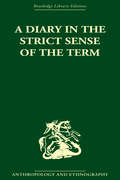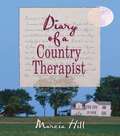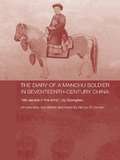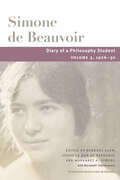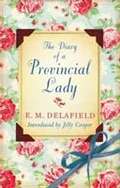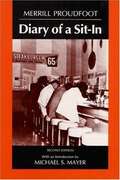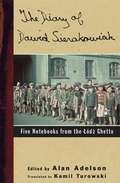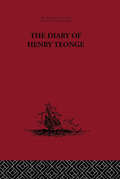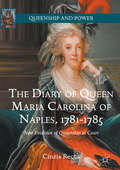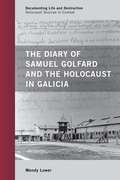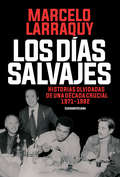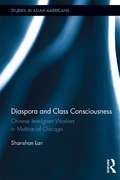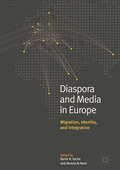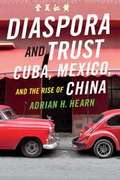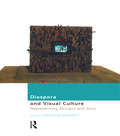- Table View
- List View
Diaphanous Bodies: Ability, Disability, and Modernist Irish Literature (Corporealities: Discourses Of Disability)
by Jeremy ColangeloDiaphanous Bodies: Ability, Disability, and Modernist Irish Literature examines ability, as a category of embodiment and embodied experience, and in the process opens up a new area of inquiry in the growing field of literary disability studies. It argues that the construction of ability arises through a process of exclusion and forgetting, in which the depiction of sensory information and epistemological judgment subtly (or sometimes un-subtly) elide the fact of embodied subjectivity. The result is what Colangelo calls “the myth of the diaphanous abled body,” a fiction that holds that an abled body is one which does not participate in or situate experience. The diaphanous abled body underwrites the myth that abled and disabled constitute two distinct categories of being rather than points on a constantly shifting continuum. In any system of marginalization, the dominant identity always sets itself up as epistemologically and experientially superior to whichever group it separates itself from. Indeed, the norm is always most powerful when it is understood as an empty category or a view from nowhere. Diaphanous Bodies explores the phantom body that underwrites the artificial dichotomy between abled and disabled, upon which the representation of embodied experience depends.
The Diaries Of Charles Greville
by Edward PearceCharles Greville (1794-1865) made his first occasional diary entries in 1814, but the diary only became a regular habit in the mid-1820s, continuing with occasional breaks, about which he is self-reproachful, through the reigns of George IV, William IV and Victoria. Finally, in 1860, after shaking his head over the worrying triumphs of Garibaldi, he closed it, once and for all. The grandson of a duke, Greville looked with a level and scornful eye upon royalty. George was 'the most worthless dog that ever lived'; William 'the silliest old gentleman in his own dominions, but what can be expected of a man with a head like a pineapple?' The diaries roused Queen Victoria - 'an odd woman' - from the lethargy of her widowhood.She spoke of Greville's 'indiscretion, indelicacy, ingratitude toward friends, betrayal of confidence and shameful disloyalty'.Greville's circle included Talleyrand, Wellington, Macaulay, Sydney Smith, Princess Lieven, Lord Grey, Melbourne, Guizot and Disraeli, as well as 'jockeys, bookmakers and blackguards'.As Clerk of the Privy Council, Greville works for a compromise on the Reform Bill.He witnesses Covent Garden theatre burning down.His closest friend, Lord De Ros, is caught cardsharping. Visiting Balmoral, he finds Albert and Victoria living 'not merely like small gentlefolks, but like very small gentlefolks'. When cholera comes, he writes laconically of 'Mrs Smith, young and beautiful, taken ill while dressing for Church and dead by nightfall.' Not a chatterbox, Charles Greville brilliantly assembles everyone else's chatter. This is the intelligent voice of another age, an uneasy aristocrat catching history on the turn and looking dubiously at the future.
Diaries Of The Court Ladies Of
by OmoriFirst published in 2005. Routledge is an imprint of Taylor & Francis, an informa company.
The Diaries of Elizabeth Inchbald Vol 2
by Ben P RobertsonAn energetic woman, Inchbald achieved fame as an actress, novelist, playwright and critic. This work includes her eleven surviving diaries, which record Inchbald's social contacts and professional activities, itemize her day-to-day expenditure, and chart the development of affairs such as the Napoleonic Wars and the trial of Queen Caroline.
Diario de viaje de investigación a Tierra del Fuego (1918-1920)
by Martín Gusinde Marisol PalmaEl diario inédito con el que el mítico sacerdote y antropólogo registró sus viajes por la Patagonia. Este acontecimiento editorial, un registro diario (inédito) de los dos primeros viajes realizados por el famoso antropólogo austríaco entre diciembre de 1918 y febrero de 1920, sale a la luz un siglo después, dando cuenta del registro escrito de un viaje mítico que ofrece una nueva comprensión documental del panorama histórico y etnográfico de la Patagonia.
Los diarios del ácido: La guía de un psiconauta sobre la historia y el uso del LSD
by Christopher GrayUna exploración sobre las verdades personales y espirituales reveladas mediante el LSD • Indica que las visiones inducidas por el LSD tejen una trama continua de un viaje a otro • Muestra que los viajes o trances psicodélicos pasan por tres etapas: los temas personales y la conciencia prenatal, la pérdida del ego y, por último, lo sagrado • Explora el consumo de sustancias psicodélicas a lo largo de la historia, incluidas las alucinaciones masivas comunes en la Edad Media y los primeros usos terapéuticos del LSD Antes de llegar a los sesenta años, Christopher Gray experimentó un viaje psicodélico con una dosis de LSD de 100 microgramos. Los efectos fueron tan extraordinarios y sorprendentemente agradables, que comenzó a tomar la misma dosis de la misma forma (en la intimidad y a solas) una vez cada dos o tres semanas durante tres años. En Los diarios del ácido, Gray relata su sorpresa al darse cuenta de que sus visiones tejían una trama continua de una experiencia psicodélica a otra, pasando por tres etapas: la primera, que trata sobre los temas personales y la conciencia prenatal; la segunda, sobre la pérdida del ego, a menudo con toques de lo sobrenatural; y la tercera, sobre aspectos sagrados y espirituales. Los diarios del ácido pone de relieve el potencial del LSD desde el punto de vista del crecimiento transpersonal y el desarrollo espiritual.
A Diary in the Strict Sense of the Term
by Bronislaw MalinowskiAlmost certainly never intended to be published, Malinowski's diary was intensely personal and brutally honest. He kept it, he said, "as a means of self-analysis." Reviews ranged from "it is to the discredit of all concerned that the diary has now been committed to print" to "fascinating reading."Twenty years have passed, and Raymond Firth suggests that the book has moved over to a more central place in the literature of anthropological reflection.
A Diary in the Strictest Sense of the Term
by Bronislaw MalinowskiThe volume presents the diary of one of the great anthropologists at a crucial time in his career. Malinowski's major works grew out of his findings on field trips to New Guinea and North Melanesia from 1914-1918. His journals cover a considerable part of that period of pioneer research. The diary contains observations of native life and customs and vivid descriptions of landscapes. Many entries reveal his approach to his work and the sources of his thought. In his introduction, Raymond Firth discusses the significance of the notebooks which formed the basis for this volume. First published in 1967.
Diary of a Country Therapist
by Marcia HillGain remarkable insight about practicing therapy in a rural community! In Diary of a Country Therapist, Dr. Marcia Hill chronicles more than a decade of her thoughts and feelings about practicing therapy in rural Vermont. The author reveals her empathy for her clients, her frustration in money matters, and her anger at the maltreatment of women. This book focuses not on the specifics of her clients' cases, but on the trials, successes, and fulfillment of working in this emotionally challenging profession. "What a strange line of work this is, where the ability to feel is such a primary tool. Who would think that one's heart could be harnessed and used intentionally as a resource? It's such a paradox. My feeling response is what it is; it cannot be commanded or faked. Yet it is not a matter of giving in to emotion, but one of using feeling purposefully, like a scalpel. It's an experience of simultaneous yielding and restraint. The job of the professional empath is like that of an artist or poet: to take raw experience, direct emotional response, and somehow make it a vehicle for change and enlightenment." From liberating breakthroughs to personal anguish, Diary of a Country Therapist is witness to a decade of changes, both in Marcia Hill's practice and in her personal life. With the advent of managed health care, she struggles to give her clients the best care she can. She talks about many of the clients she met over the years-what therapies worked and which didn't, her discomfort when she interacted with her clients in and around her small country town, and the valuable lessons she learned about life from her sessions with them. "If therapists are exposed to what is most tragic in life, we are also privy to what is most inspiring. We have the benefit of experiencing many lives. If my work has offered me the opportunity to learn wisdom and compassion, my wish is that through these essays I may pass some of that gift along to you." Diary of a Country Therapist is the honest scrutiny of a psychotherapist's life from her own heart and soul. While this text will be enlightening for mental health professionals of all kinds, its accessible, jargon-free style makes it an excellent selection for nonprofessionals who want insight into the mind of a practicing therapist.
The Diary of a Manchu Soldier in Seventeenth-Century China: "My Service in the Army", by Dzengseo (Routledge Studies in the Early History of Asia)
by Nicola Di CosmoProviding original insights into Chinese military history, Nicola Di Cosmo gives an annotated translation of the only known military diary in pre-modern Chinese history, providing fresh and extensive information on the inner workings of the Ch'ing army. The personal experience of the author, a young Manchu officer fighting in inhospitable South-Western China, take us close to the 'face of the battle' in seventeenth-century China, and enriches our general knowledge of military history.
Diary of a Philosophy Student: Volume 3, 1926-30 (Beauvoir Series #3)
by Simone BeauvoirWritten between the age of eighteen and twenty-one, the entries in the third volume of Diary of a Philosophy Student take readers into Simone de Beauvoir’s thoughts while illuminating the people and ideas swirling around her. The pages offer rare insights into Beauvoir’s intellectual development; her early experiences with love, desire, and freedom; and relationships with friends like Élisabeth “Zaza” Lacoin, and Maurice Merleau-Ponty. It also presents Beauvoir’s shocking account of Jean-Paul Sartre’s sexual assault of her during their first sexual encounter--a revelation certain to transform views of her life and philosophy. In addition, the editors include a wealth of important supplementary material. Barbara Klaw provides a detailed consideration of the Diary’s role in the development of Beauvoir’s writing style by exploring her use of metanarrative and other literary techniques, part of a process of literary creation that saw Beauvoir use the notebooks to cultivate her talent. Margaret A. Simons’s essay places the assault by Sartre within an appraisal of Beauvoir’s complicated legacy for #MeToo while suggesting readers engage with the diary through the lens of trauma.
The Diary of a Provincial Lady
by E. M. DelafieldThe Diary of a Provincial Lady is a witty celebration of the suburban British housewife. The Provincial Lady has a nice house, a nice husband, and nice children. She never raises her voice, rarely ventures outside Devon, only occasionally allows herself to become vexed by the ongoing servant problem, and would be truly appalled by the confessional mode that has gripped the late 20th century. The Provincial Lady, after all, is part of what made Britain great.
Diary of a Sit-in
by Merrill ProudfootThe sit-in movement marked an extraordinary moment in history.
The Diary of Dawid Sierakowiak: Five Notebooks From the Lodz Ghetto
by Dawid Sierakowiak"In the evening I had to prepare food and cook supper, which exhausted me totally. In politics there's absolutely nothing new. Again, out of impatience I feel myself beginning to fall into melancholy. There is really no way out of this for us. " This is Dawid Sierakowiak's final diary entry. Soon after writing it, the young author died of tuberculosis, exhaustion, and starvation--the Holocaust syndrome known as "ghetto disease. " After the liberation of the Lodz Ghetto, his notebooks were found stacked on a cookstove, ready to be burned for heat. Young Sierakowiak was one of more than 60,000 Jews who perished in that notorious urban slave camp, a man-made hell which was the longest surviving concentration of Jews in Nazi Europe. The diary comprises a remarkable legacy left to humanity by its teenage author. It is one of the most fastidiously detailed accounts ever rendered of modern life in human bondage.
The Diary of Henry Teonge: Chaplain on Board H.M's Ships Assistance, Bristol and Royal Oak 1675-1679
by Henry TeongeFirst published in 1927. 'This diary is history' The ObserverThis is the first complete published edition of Teonge's Diary. The edition of 1825, besides omitting several passages, contained many faulty transcriptions which have now been corrected for this edition. An intensely human document, enlivened with sketches of the people he met and places he visited, Teonge's Diary is one of the finest accounts of life on board ship in the seventeenth century. When not at sea, Henry Teonge's life was as a parson and this edition of his Diary includes a full inventory for his Parish, providing an excellent source of historical and social information on rural life in the late 1600s.
The Diary of Mattie Spenser: A Novel
by Sandra DallasNo one is more surprised than Mattie Spenser herself when Luke Spenser, considered the great catch of their small Iowa town, asks her to marry him. Less than a month later, they are off in a covered wagon to build a home on the Colorado frontier. Mattie's only company is a slightly mysterious husband and her private journal, where she records the joys and frustrations not just of frontier life, but also of a new marriage to a handsome but distant stranger. As she and Luke make life together on the harsh and beautiful plains, Mattie learns some bitter truths about her husband and the girl he left behind and finds love where she least expects it. Dramatic and suspenseful, this is an unforgettable story of hardship, friendship and survival.
The Diary of Queen Maria Carolina of Naples, 1781-1785: New Evidence of Queenship at Court (Queenship and Power)
by Cinzia ReccaThis work offers a new portrayal of Queen Maria Carolina of Naples as a woman of power with weaknesses and ambitions, and analyzes the Queen's actions, from her political choices to her alliance and betrayals. A careful examination of the period (1781-1785) covered by the diary shows that the daily life of the Queen and offers key evidence of her political acumen and her personal relationships. Recca cross-analyses unpublished personal documents, which include the integral diary and private correspondence. The book focuses on the political influence that Queen Maria Carolina wielded beside her husband, King Ferdinand IV, and the criticism that has been made by contemporary historians and intellectuals who have often tended to discredit the sovereign for personal rather than political reasons.
The Diary of Samuel Golfard and the Holocaust in Galicia
by Wendy LowerThe Diary of Samuel Golfard and the Holocaust in Galicia examines the contents and context of a rare diary written by a Jewish man from Nazi-occupied Poland. Serving as both a record and an artifact of Samuel Golfard’s life, the diary details his attempt to make sense of and resist the event that ultimately destroyed him. Wendy Lower integrates photographs, newspaper articles, documents, and testimonies to create a more complete picture of Golfard’s experiences and writings. She also traces the diary’s own journey after Golfard’s death, from 1943 Poland to the present day.
Diary Of An Undocumented Immigrant
by Ramón Tianguis" Pérez Dick J. ReavisThis autobiographical account of survival as a "wetback" or "mojado," affords the reader an unexpurgated look at the United States, its economy and culture from the perspective of the undocumented worker.
Los días salvajes: Historias olvidadas de una década crucial 1971-1982
by Marcelo LarraquyRelatos que repercutieron en los medios y la opinión pública de la década del setenta, pero no tuvieron la misma difusión que los hitos violentos -asesinatos, desapariciones y atentados- de esos años. Desde fines de los sesenta hasta comienzos de los ochenta del siglo pasado, la Argentina vivió uno de los períodos más traumáticos de su historia. Esos años fueron estudiados, analizados y revisados exhaustivamente, sin embargo, existen todavía historias disueltas en la memoria o desconocidas. Los días salvajes se propone rescatarlas. Entre ellas están la pulseada de Muhammad Ali y José Rucci en una fábrica del Conurbano, los entretelones de la candidatura de Héctor Cámpora, el protocolo redactado por las Fuerzas Armadas para dar el golpe de Estado, la detenida-desaparecida que llamaba a sus padres durante la democracia, las topadoras que destruyen el barrio de René Houseman mientras el goleador se prepara para jugar el Mundial 78, el naufragio del buque mercante argentino impactado por los ingleses en Malvinas. Célebre por las biografías de personajes emblemáticos (López Rega y Galimberti) y la investigación de la historia violenta del país, Marcelo Larraquy recupera eventos perdidos en el relato de esa década. Y afirma: "Los treinta episodios de este libro pueden parecer dispersos o dispares, pero una fuerza ciega los reúnen a todos. La fuerza de las expectativas colectivas no resueltas. La fuerza de las ideas y de las ilusiones, de los odios. La fuerza del miedo, de las tragedias, de lo que se quiso y no se pudo. De lo que se padeció".
Diaspora and Class Consciousness: Chinese Immigrant Workers in Multiracial Chicago (Studies in Asian Americans)
by Shanshan LanThis book is an ethnographic study of the multi-linear process of racial knowledge formation among a relatively invisible population in the Chinese American community in Chicago, namely the working class. Shanshan Lan defines "Chinese immigrant workers" as Chinese immigrants with limited English language skills who work primarily at low-skill, blue-collar service jobs at the extreme margins of U.S. economy. The book moves away from the enclave paradigm by situating the Chinese immigrant experience within the larger context of transnational labor migration and the multiracial transformation of urban U.S. landscape. Through thick ethnographic descriptions, Lan explores Chinese immigrant workers’ daily struggles to cope with the disjuncture between race as an American ideological construct and race as a lived experience. The book argues that Chinese immigrant workers’ racial learning is not always a matter of personal choice, but is conditioned by structural factors such as the limitation of the Black and white racial binary, the transnational circulation of U.S. racial ideology, the negative influence of prevalent U.S. rhetoric such as multiculturalism and colorblindness, and class differentiations within the Chinese American community.
Diaspora and Media in Europe
by Karim H. Karim Ahmed Al-RawiThis book examines how African, Asian, Middle Eastern and Latin American diasporas use media to communicate among themselves and to integrate into European countries. Whereas migrant communities continue employing print and broadcasting technologies, the rapidly growing applications of Internet platforms like social media have substantially enriched their interactions. These communication practices provide valuable insights into how diasporas define themselves. The anthology investigates varied uses of media by Ecuadorian, Congolese, Moroccan, Nepalese, Portugal, Somali, Syrian and Turkish communities residing in Belgium, Germany, Italy, the Netherlands, Spain, Sweden and the UK. These studies are based on research methodologies including big data analysis, content analysis, focus groups, interviews, surveys and visual framing, and they make a strong contribution to the emerging theory of diasporic media.
Diaspora and Trust: Cuba, Mexico, and the Rise of China
by Adrian H. HearnIn Diaspora and Trust Adrian H. Hearn proposes that a new paradigm of socio-economic development is gaining importance for Cuba and Mexico. Despite their contrasting political ideologies, both countries must build new forms of trust among the state, society, and resident Chinese diaspora communities if they are to harness the potentials of China's rise. Combining political and economic analysis with ethnographic fieldwork, Hearn analyzes Cuba's and Mexico's historical relations with China, and highlights how Chinese diaspora communities are now deepening these ties. Theorizing trust as an alternative to existing models of exchange--which are failing to navigate the world's shifting economic currents--Hearn shows how Cuba and Mexico can reformulate the balance of power between state, market, and society. A new paradigm of domestic development and foreign engagement based on trust is becoming critical for Cuba, Mexico, and other countries seeking to benefit from China's growing economic power and social influence.
Diaspora and Visual Culture: Representing Africans and Jews
by Nicholas MirzoeffThis is the first book to examine the connections between diaspora - the movement, whether forced or voluntary, of a nation or group of people from one homeland to another - and its representations in visual culture. Two foundational articles by Stuart Hall and the painter R.B. Kitaj provide points of departure for an exploration of the meanings of diaspora for cultural identity and artistic practice. A distinguished group of contributors, who include Alan Sinfield, Irit Rogoff, and Eunice Lipton, address the rich complexity of diasporic cultures and art, but with a focus on the visual culture of the Jewish and African diasporas. Individual articles address the Jewish diaspora and visual culture from the 19th century to the present, and work by African American and Afro-Brazilian artists.
Diaspora-Biografien in der Migrationsgesellschaft: Eine sozialwissenschaftliche Fallstudie über erzählte Biografien von Angehörigen der jesidischen Minderheit und deren Lebenswelt(en) in Deutschland
by Süleyman KanatDie Minderheit der Jesiden, deren Angehörige mittlerweile zum Teil in der dritten Generation in der deutschen Migrationsgesellschaft leben, ist vor allem durch den an ihnen im Nordirak verübten Genozid im Jahr 2014 vorübergehend in das öffentliche Interesse gerückt. Zwar gibt es Forschungsarbeiten über die Lage dieser Minderheit im deutschsprachigen Raum, doch fehlen vor allem für die Soziale Arbeit notwendige biografieorientierte Fallstudien, die die Perspektive der Betroffenen tiefergehend qualitativ analysieren. Dieses Buch beschäftigt sich daher mit dem Fragenkomplex, welchen möglichen biografischen Herausforderungen Angehörige der jesidischen Minderheit unter den Bedingungen eines Lebens in der Diaspora einer Migrationsgesellschaft ausgesetzt seien können und wie diese von ihnen in ihren individuellen Lebenslagen und Lebenswelten artikuliert, eingeordnet und bewältigt werden. Neben der Sensibilisierung für die Lebenslagen der jesidischen Minderheit in der Diaspora ist es auch ein Forschungsbeitrag, die Komplexität migrationsgesellschaftlicher Verhältnisse aus der subjektiven Perspektive von Minderheitsangehörigen besser zu verstehen. Damit wird es auch möglich, die lebensweltlichen Voraussetzungen, unter denen die Betroffenen an institutionellen Bildungssettings teilhaben, zu berücksichtigen.
